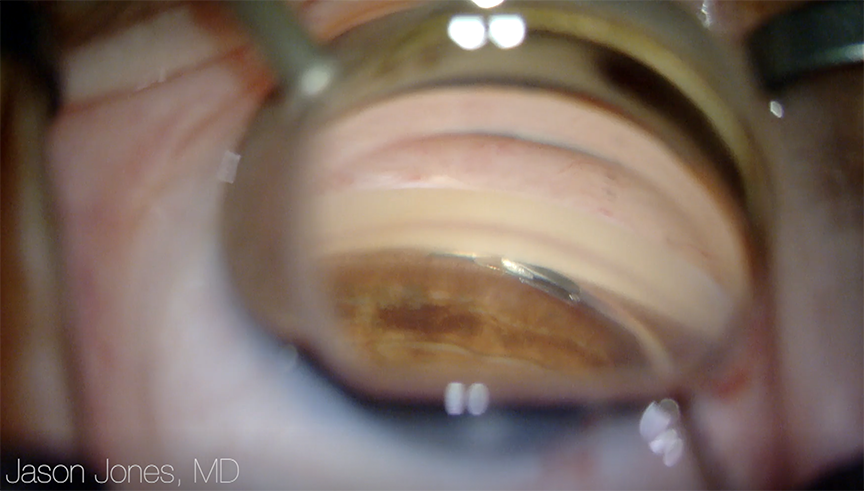 |
|
Combining a microstent MIGS device with cataract surgery reduced the rate of VF worsening compared with cataract surgery alone in POAG patients, even when both groups had equal access to medical IOP-lowering. Photo: Jason Jones, MD. Click image to enlarge. |
Minimally invasive glaucoma surgery (MIGS) devices that can be implanted into Schlemm's canal in conjunction with cataract surgery, such as the Hydrus Microstent (Alcon), have demonstrated significantly greater reduction in medication use and intraocular pressure (IOP) compared with cataract surgery alone. However, preventing visual loss is the true goal of glaucoma treatment. A fundamental unanswered question concerning all MIGS devices is whether they have any measurable ability to help primary open-angle glaucoma (POAG) patients retain their vision. Because individual IOP measurements are samples of what the actual IOP effectively is, this parameter may not always correlate with visual preservation. A post-hoc analysis of visual field (VF) data from the HORIZON multicenter randomized controlled trial revealed that cataract surgery with a microstent preserved VFs by reducing the rate of progression compared with cataract surgery alone.
In the study, published in the American Journal of Ophthalmology, 556 patients with glaucoma and cataracts were randomized two-to-one to either microstent and cataract surgery (n=369) or cataract surgery alone (n=187) and followed up for five years. VF testing was performed at six months and then every year after surgery (2,966 VFs overall).
The researchers analyzed data for all participants with at least three reliable VFs (false positives <15%). The average rate of progression was -0.26dB/year for microstent and cataract surgery and -0.49dB/year for cataract surgery alone. This difference was significant. The difference in IOP only explained 17% of the effect. Five-year survival analysis showed an increased probability of VF worsening by 5.5dB, indicating a greater proportion of fast progressors in the cataract surgery arm.
“We provide the first analysis of the effect of a canal-based MIGS device on VF progression in glaucoma patients monitored for up to five years within the HORIZON study, a prospective, randomized multicenter trial,” the study authors wrote. “Although not all patients are fast progressors, these patients are the most vulnerable to serious vision loss. Yet it is difficult to predict those who will deteriorate rapidly and thus, when treating glaucoma, we usually treat all to protect those who may progress fast.”
Montesano G, Ometto G, Ahmed IIK, et al. Five-year visual field outcomes of the HORIZON trial. Am J Ophthalmol. February 20, 2023. [Epub ahead of print]. |


